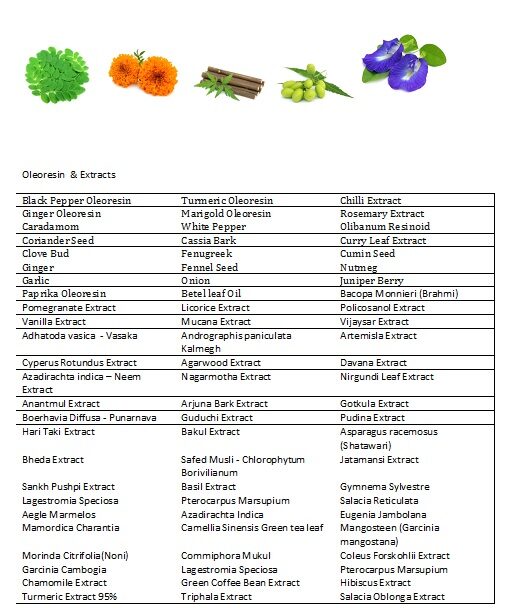Oleoresin is a natural mixture extracted from various plant sources, particularly spices and herbs, through solvent extraction or steam distillation methods. It contains a combination of volatile essential oils, non-volatile resinous compounds, and other plant constituents, which contribute to its characteristic aroma, flavor, and color.
The composition of oleoresins can vary depending on the plant source and extraction method used, but they typically contain:
-
Essential Oils: These are volatile compounds responsible for the aroma and flavor of the plant. Essential oils are rich in aromatic molecules such as terpenes, phenols, and aldehydes.
-
Resinous Compounds: These are non-volatile substances that provide the oleoresin with its viscosity and stickiness. Resinous compounds include gums, waxes, and polymeric substances derived from the plant's resin glands.
-
Other Plant Constituents: Oleoresins may also contain other bioactive compounds such as flavonoids, alkaloids, and phenolic compounds, which contribute to their sensory and functional properties.
Oleoresins are commonly used as flavoring agents, coloring agents, and aromatic additives in various food products, including sauces, seasonings, condiments, and processed meats. They are also utilized in the fragrance industry for perfumes, cosmetics, and personal care products.
One advantage of oleoresins is their concentrated nature, which allows for easier handling and storage compared to whole spices or herbs. They also offer consistent flavor and color profiles, making them desirable for food manufacturers seeking standardized ingredients.
Examples of commonly used oleoresins include:
-
Capsicum Oleoresin: Extracted from chili peppers, capsicum oleoresin is used to add heat and flavor to spicy foods.
-
Paprika Oleoresin: Derived from paprika peppers, paprika oleoresin provides a red color and mild flavor to foods such as sausages, cheeses, and snacks.
-
Black Pepper Oleoresin: Obtained from black pepper, this oleoresin imparts a pungent and spicy flavor to various dishes.
-
Ginger Oleoresin: Extracted from ginger root, ginger oleoresin is used for its spicy and aromatic properties in beverages, baked goods, and Asian cuisines.
Overall, oleoresins play a significant role in the food and fragrance industries, offering concentrated natural extracts that contribute to the sensory attributes and overall quality of a wide range of products.

© The Kumar's Biotech